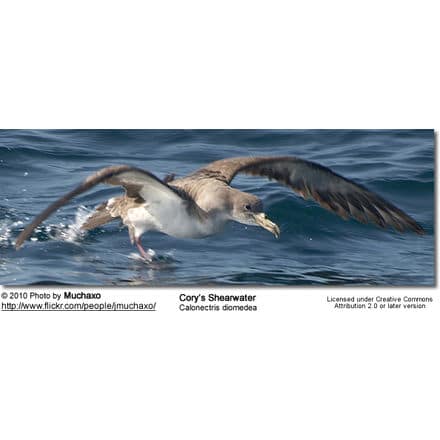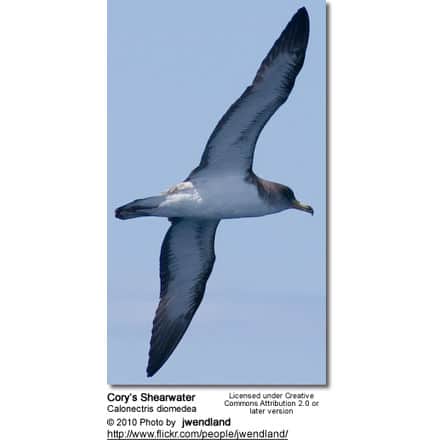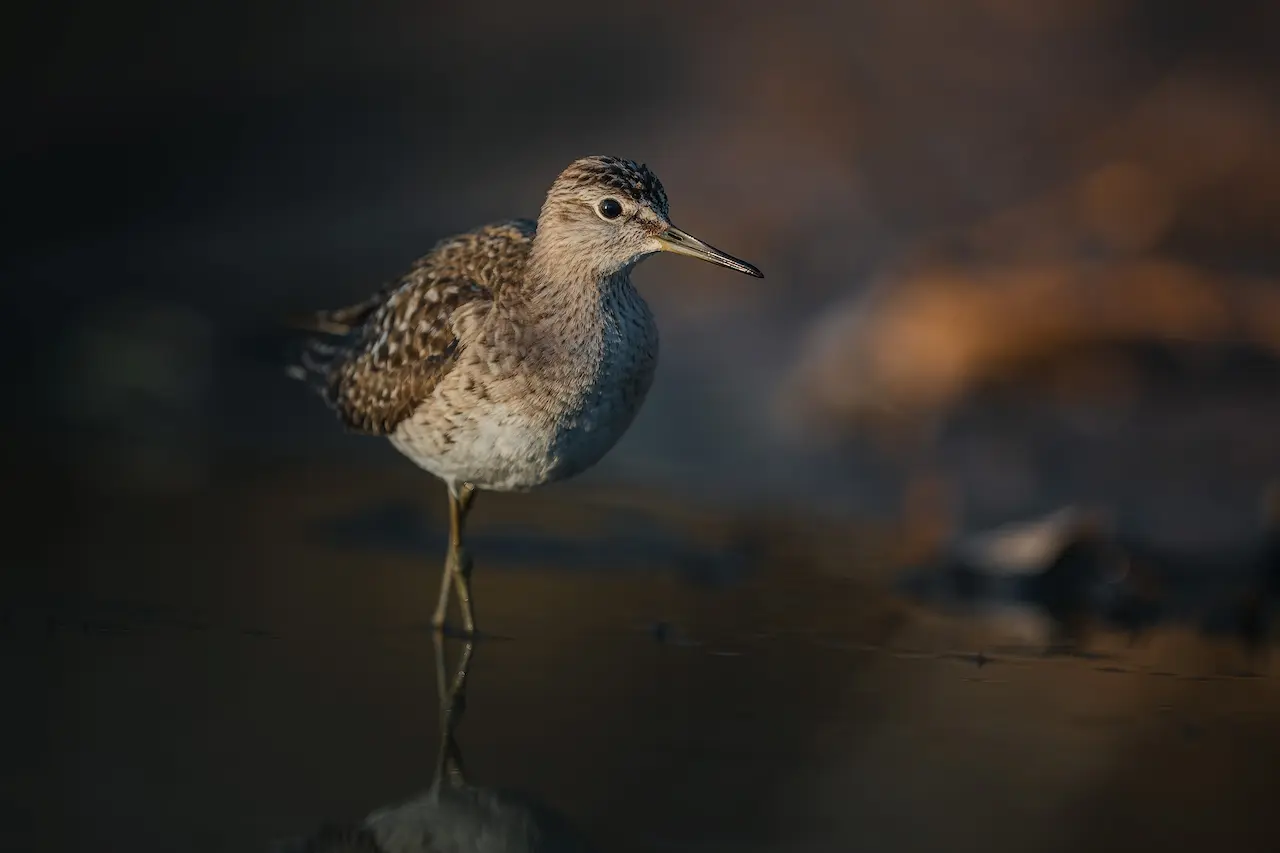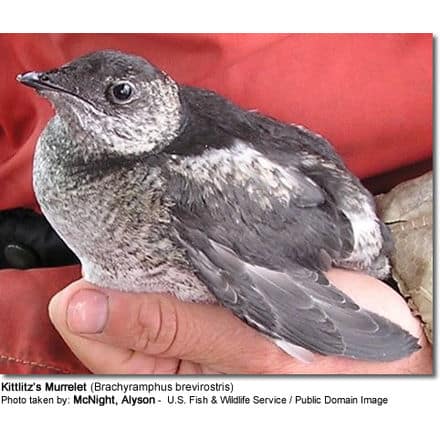Cory’s Shearwaters (Calonectris diomedea)
The Cory’s Shearwaters (Calonectris diomedea) is a large shearwater in the seabird family Procellariidae.

This Cory’s Shearwaters bird was named after the American ornithologist Charles B. Cory.
Breeding / Distribution
This species breeds on islands and cliffs in the Mediterranean, with the odd outpost on the Atlantic coast of Iberia.
The nest is on open ground or among rocks or less often in a burrow where one white egg is laid and is visited at night to minimize predation from large gulls.
In late summer and autumn, most birds migrate into the Atlantic as far north as the southwestern coasts of Great Britain and Ireland.
They return to the Mediterranean in February. The biggest colony is located in the Savage Islands, Madeira.

Description
This Cory’s Shearwaters bird flies with long glides, and always with wings bowed and angled slightly back, unlike the stiff, straight-winged flight of the similarly-sized Great Shearwater.
This shearwater is identifiable by its size, at 45-56 cm in length and with a 112-126 cm wingspan. It has brownish-grey upperparts, white underparts, and a yellowish bill. It lacks the brown belly patch, dark shoulder markings, and black cap of Great Shearwater.
There are two subspecies:
- the Mediterranean subspecies C. d. diomedea, and
- the Atlantic subspecies C. d. borealis.
They are closely similar in appearance, although the Atlantic race is larger, and with a stouter bill. They are best distinguished by the pattern of the underwing.
Being fairly distinct (Heidrich et al. 1998), they are sometimes regarded as separate species, C. d. diomedea then being named Scopoli’s Shearwater.
The Cape Verde Shearwater C. edwardsii (Oustalet, 1883) was once considered a subspecies of Cory’s Shearwater but has recently been split off as a separate species (Snow and Perrins 1998). It is endemic to the Cape Verde Islands. It has an all-dark, slim bill, and darker head and upperparts than Cory’s. The flight has been described as rather more typically shearwater-like than Cory’s, with stiffer and more rapid wing beats.
Diet / Feeding
Cory’s Shearwater feeds on fish, mollusks, and offal (= entrails and internal organs of butchered animals), and can dive deep (50 feet/15 meters or more) in search of prey. It readily follows fishing boats, where it indulges in noisy squabbles.
This is a gregarious species, which can be seen in large numbers from ships or appropriate headlands. The Bay of Biscay ferries are particularly good for this species.
Calls / Vocalizations
It is silent at sea, but at night the breeding colonies are alive with raucous cackling calls.
References
- BirdLife International (2004). Calonectris diomedea. 2006. IUCN Red List of Threatened Species. International Union for Conservation of Nature (IUCN) 2006. Retrieved on 12 May 2006. Database entry includes justification for why this species is of least concern
- Bull, John L.; Farrand, John Jr.; Rayfield, Susan and National Audubon Society (1977): The Audubon Society field guide to North American birds, Eastern Region. Alfred A. Knopf, New York. ISBN 0-394-41405-5
- Harrison, Peter (1983): Seabirds: An Identification Guide. Croon Helm, Beckenham. ISBN 0-7099-1207-2
- Heidrich, Petra; Amengual, José F. and Wink, Michael (1998): Phylogenetic relationships in Mediterranean and North Atlantic shearwaters (Aves: Procellariidae) based on nucleotide sequences of mtDNA. Biochemical Systematics and Ecology 26(2): 145–170. doi:10.1016/S0305-1978(97)00085-9 PDF fulltext
- Snow, David W.; Perrins, Christopher M., and Gillmor, Robert (1998): The Birds of the Western Palearctic. Oxford University Press. ISBN 0-19-850187-0
Beauty Of Birds strives to maintain accurate and up-to-date information; however, mistakes do happen. If you would like to correct or update any of the information, please contact us. THANK YOU!!!








